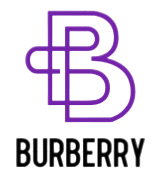IoT and Web3 Tools for Creating More Secure and Interoperable Networks
The realm of technology is witnessing a fascinating convergence between the Internet of Things IoT and Web3, brimming with potential to revolutionize how devices connect and interact. IoT, the network of physical devices embedded with sensors and software, is rapidly expanding, promising a future where everyday objects seamlessly communicate and automate tasks. Web3, on the other hand, is the next iteration of the internet, built on decentralization principles like blockchain technology. This synergy between these two seemingly disparate forces holds the key to creating a more secure, interoperable, and user-centric network of devices. Imagine a world where your smart home appliances, from thermostats to refrigerators, not only communicate with each other but also transact directly with the power grid, autonomously purchasing energy when prices are low. This scenario, once fantastical, becomes a possibility with Web3’s core technology blockchain. Blockchain acts as a secure and transparent ledger, recording every interaction between devices. This immutability fosters trust and eliminates the need for centralized control, a hallmark of Web3.

In an IoT landscape empowered by blockchain, data breaches become a distant memory as every transaction is cryptographically secured and tamper-proof. Furthermore, Web3 paves the way for interoperability, a significant challenge in the current IoT landscape. With a multitude of device manufacturers and communication protocols, ensuring seamless communication between devices remains a hurdle. Blockchain, with its standardized framework, can bridge this gap. Devices can leverage smart contracts, self-executing agreements written on the blockchain, to establish secure connections and exchange data regardless of their origin or underlying technology. This interoperability fosters a more cohesive and efficient network, unlocking a new wave of innovation in areas like smart cities and industrial automation. The convergence of IoT and Web3 empowers not just devices but also users. By placing ownership of data back in the hands of users, Web3 principles challenge the current paradigm where large corporations control vast troves of user data.
In an IoT environment powered by Web3 unitools, users can choose how their device data is used and potentially even monetize it. Imagine your fitness tracker not only monitoring your health but also selling anonymized workout data to health research institutions, with you receiving a share of the profits. This shift in data ownership empowers users and fosters a more transparent and user-centric ecosystem. However, this exciting technological marriage is not without its challenges. Scalability remains a major hurdle for blockchain technology, which currently struggles to handle the high volume of transactions that an expansive IoT network would generate. Additionally, security concerns persist, as the complexity of integrating Web3 with existing IoT infrastructure introduces new attack vectors. Despite these challenges, the potential benefits of converging IoT and Web3 are undeniable. As these technologies mature and integrate seamlessly, we can look forward to a future where our devices operate with greater security, efficiency, and user empowerment. This convergence has the potential to reshape industries, transform how we interact with the physical world, and usher in a new era of intelligent and interconnected devices.
